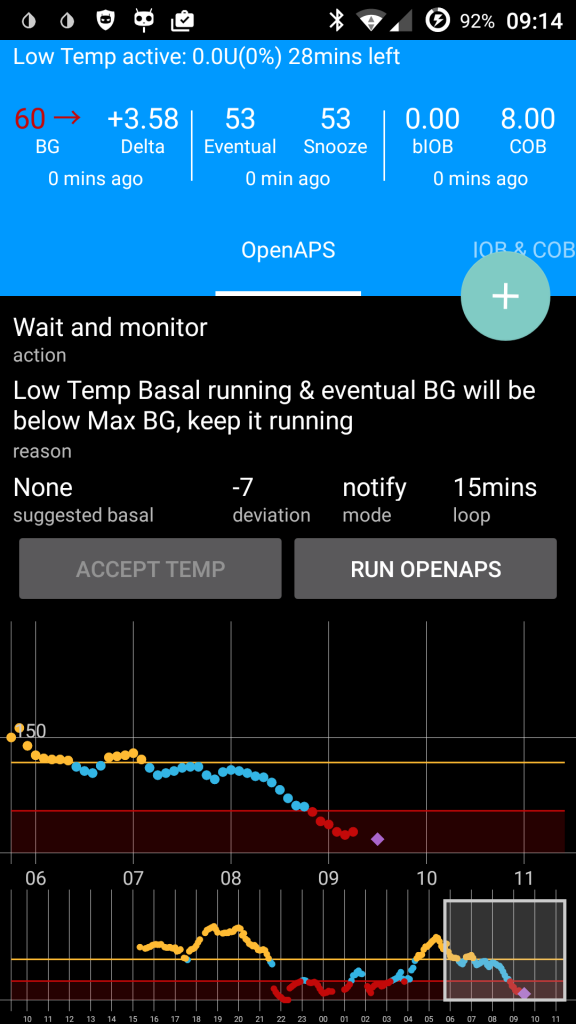It was a turn of good fortune that Tim Omer’s presentation to the London Type 1s group fell on the same day as the Medical Technology Awareness Week Reception at Parliament I attended. I was looking forward to this event, it didn’t disappoint.
But first: That annoying Guardian article
Having created our first xDrip in early January and using it effectively since then I was more than pleased to read that Stephen Black’s xDrip design was at the center of his system. I was intrigued, I needed to learn more and an article about Tim in the Guardian gave me that chance. Unfortunately although Tim’s article from the Guardian in late October gave a great overview of what he was trying to do the journalist neglected to print any of the information Tim gave them about who designed the different parts. I’ll be honest, this annoyed me, it’s lazy journalism and I’m suprised the author, Lord Darzi, who has a medical and scientific vocation, did not list the relevant sources.
A bloody nice bloke
I’d never met Tim before but what came across strongly was that he’s very knowledgeable about everything Type 1 tech, whether it be at Dexcom G4 or G5, artificial pancreases, insulins, many types of bolusing as well as the tech stuff, like Bluetooth, RF and NFC to name but a few. He’s also a very nice chap, more than happy to answer any question to help the person asking, really Paying It Forward to make others’ lives easier. As Paying It Forward is my current voie de vie it’s clear Tim and I would get on well. Then add a love a travel and all round geekiness and it gets even better.
A brief history of time…it’s only three years long
Tim spent quite a while going through the history which led to HAPP, from John Costik, Lane Desborough, Jason Adams, Ben West and all the other Nightscout founders and developers, then onto to talk about Dana and Scott Leibrand being the first to ‘close the loop’ – that’s where the pump is controlled based on inputs from CGM data. He spent a good bit of time crediting those forerunners in enabling him to get where he is now.
Let’s talk about Loops baby
Let’s stop for a moment to talk about about loops.
An ‘open loop’ design takes CGM data and suggests actions, the pump is never touched, or even connected to the system.
A ‘closed loop’ will actually control the pump.
A ‘closed loop’ system is therefore probably what people would see as an actual artificial pancreas, it controls the pump to reduce or increase the level of insulin given. One type of a ‘closed loop’ system is that run by Dana/Scott and follows the OpenAPS method where it constantly puts on TBRs (temporary basal rates) and will potentially stop all basal insulin delivery for a moment of time, or increase the amount of insulin for a moment of time. This use of TBRs is for me an important thing as it’s a safety mechanism, given that it is constantly monitoring, calculating and adjusting. Just imagine what would happen if the system gave a 2 unit ‘correction’ and BGs started coming down rapidly, it couldn’t backtrack. That’s not the case with TBRs, much safer indeed.
I’ve seen the results of Dana’s system, it’s very, very impressive.
And it’s not just Dana: there’s 16 people who are running a ‘closed loop’ OpenAPS system. Amazing eh?
Going back to ‘open loops’, it’s just what we do already right, using Smart Meters or our brains? At the moment us parents and T1s make decisions many times a day about what action to take to amend a glucose level that’s heading out of range. But the problem is that emotion is brought into the loop (sorry – dreadful pun) and we end up over-correcting too often. And we have to think to take a look at the BG or CGM trend and do something. An ‘open loop’ sorts some of that out by using notifications and suggestions and of course you don’t need to accept the suggestion.
HAPPy days
So where is Tim now with HAPP? It’s at the ‘open loop’ stage, where it runs nicely on his mobile phone and sends notifications to his watch which he can choose to act on or not. Although I noticed I’m not sure that everyone realised that Tim had set a couple of TBR adjustments during his demo. At the end of the demo he showed us the results with his own Nightscout page and everyone could see the 0% TBRs he’d put on, which on HAPP had suggested and Tim felt comfortable with.
A HAPPy future
Once Tim has honed his current ‘open loop’ system he will be trying to move it to the ‘closed loop’ stage.
He’s determined, he’s knowledgeable, he’s very resourceful.
I’m sure he will get there and I wish him good luck.
Moreover, I really hope to get to meet him properly one day and have time to talk.
But what about us?
I’m very behind a homemade open loop system for Amy, I’ve got no problem with that, although I can’t imagine it’s anything we’ll look in the coming months. It could monitor Amy and give suggestions as to TBRs to put on and with her knowledge of what else is going on she could choose to action those suggestions or not.
Her choice.
So, no ‘closed loop’ desire for us them.
But if it were me…I’d already have a closed loop system or be working towards it. I’d leap into this technology because after all I’m a computer programmer so I could tailor it.
Amy can’t do that and I won’t mess with her health.
As far as all of us in that room are concerned…. #WeAreNotWaiting
Further information
The Guardian article about Tim’s HAPP
Tim Omer’s HAPP GitHub

